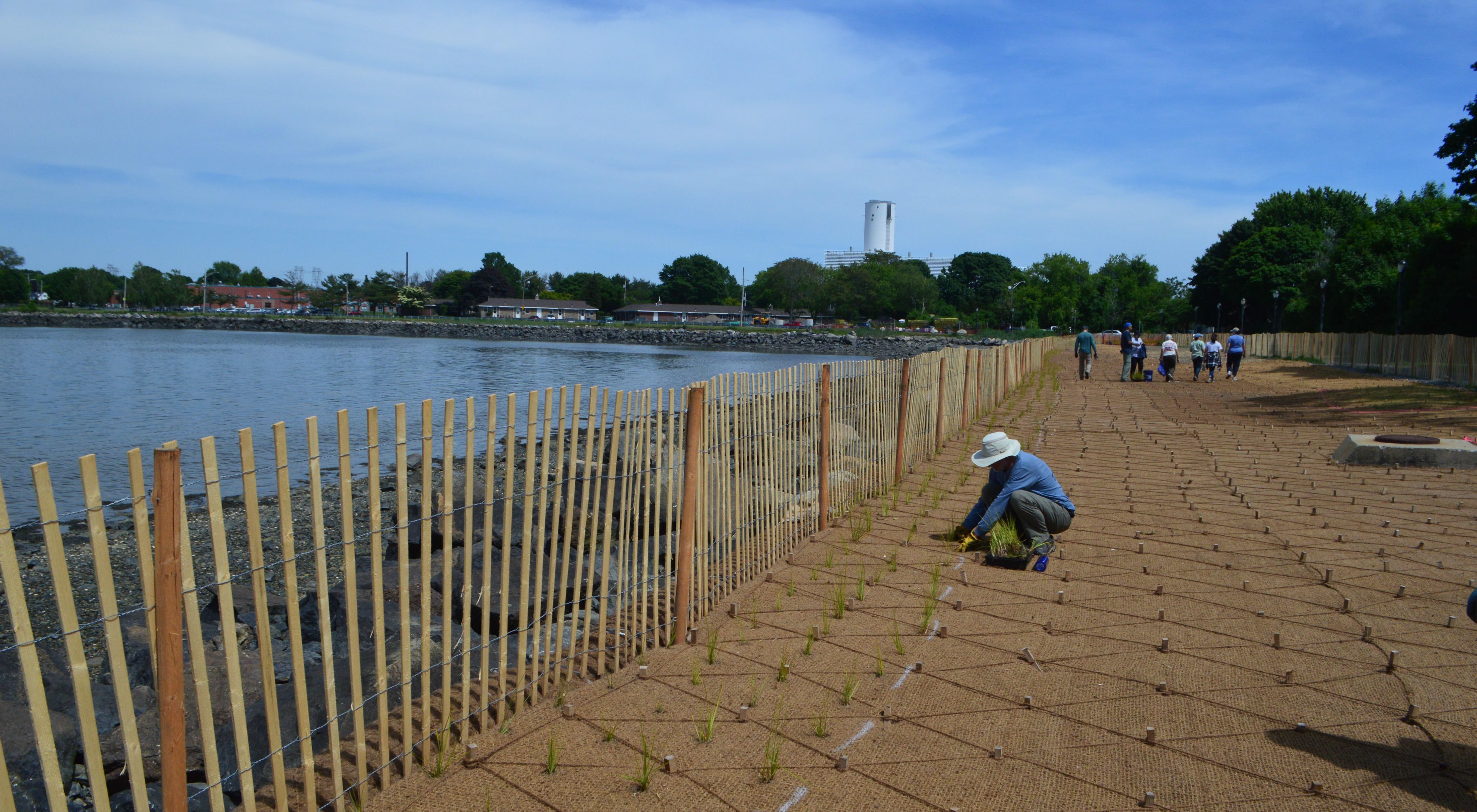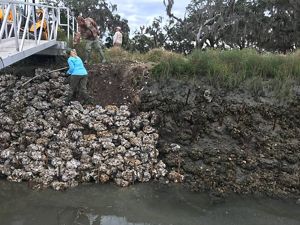Harnessing Nature's Designs
Learning how nature can reduce coastal erosion.
For Barbara Warren, leading a volunteer effort to plant 15,000 marsh grass plugs to restore a three-quarter-acre salt marsh along Salem’s Collins Cove is a labor of love. Her organization, Salem Sound Coastwatch, worked in partnership with the city of Salem, Massachusetts Office of Coastal Zone Management and The Nature Conservancy to build a living shoreline in an effort to naturally address erosion and flooding over time.
Protecting the New England Coast
“This is an ideal place,” says Warren, Coastwatch’s executive director, of Collins Cove. “We had salt marsh trying to grow, but it was on gravel. We would get waves, and it would break apart. There’s also a very active bike and walking path next to the site. There’s great visibility—but the path has also been getting destroyed by the waves.”

What is a living shoreline?
The work is being done in connection with a three-year National Oceanic and Atmospheric Administration-funded and TNC-managed project to grow understanding across New England of the effectiveness of living shorelines. These approaches—dune nourishment, bank stabilization and marsh restoration—are all nature-based solutions that primarily use a mix of sand or stones, native vegetation and biodegradable materials to protect the shoreline from wave action and increase resilience. 15 projects have been installed throughout New England with state and local partners and are now being monitored.
Quote: Eric Roberts
Evidence from other regions suggests living shorelines can reduce erosion while providing recreation opportunities, stormwater storage and wildlife habitat.

Understanding Local Potential
“Evidence from other regions, including the Southeast, suggests living shorelines can reduce erosion while providing recreation opportunities, stormwater storage and wildlife habitat,” says Eric Roberts, former coastal resilience specialist for TNC in Massachusetts, who led the regional project and now serves as the global climate risk and resilience program manager for TNC. “Right now, we don’t have much local data to tell us how these approaches will perform here.”
The lessons learned from the project will be shared so property owners, coastal engineers and regulators have solid local information and—where appropriate—can embrace living shorelines.

